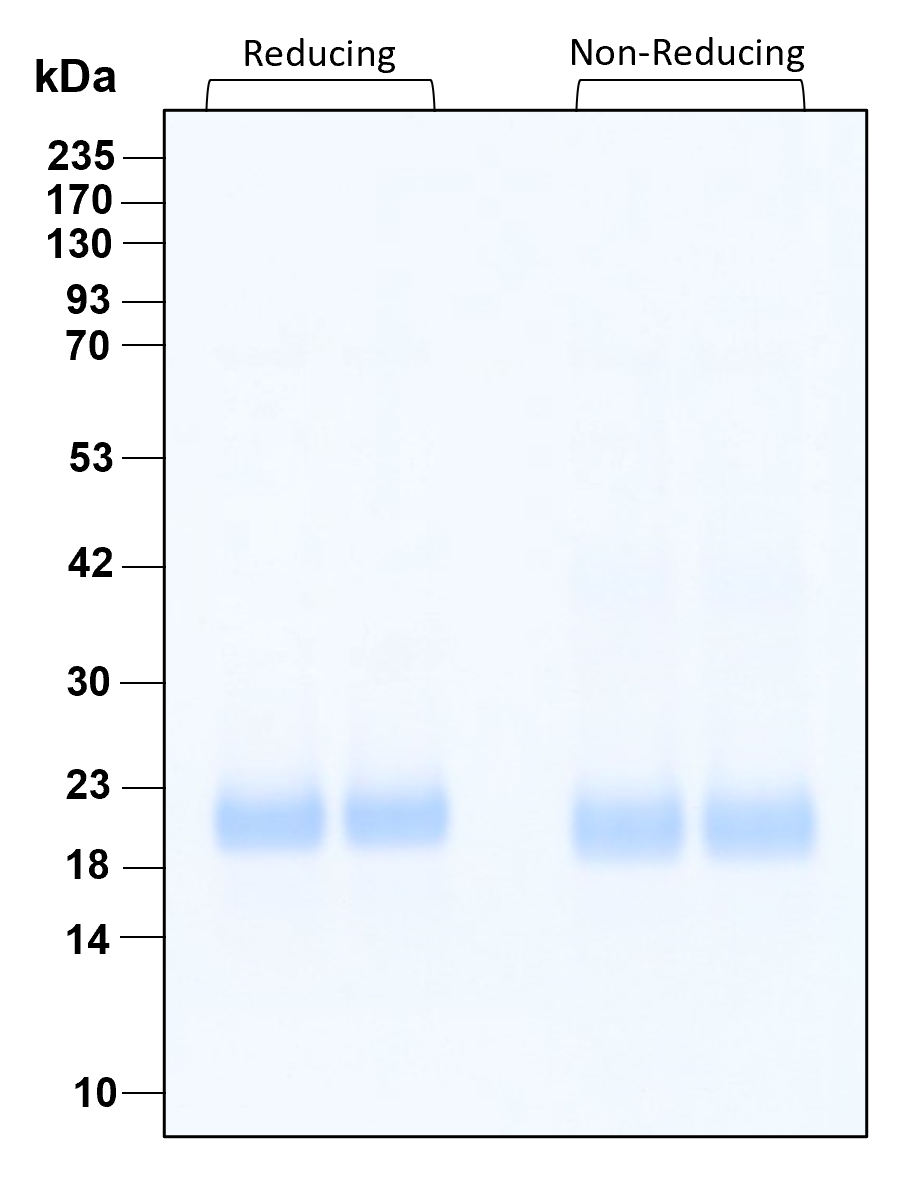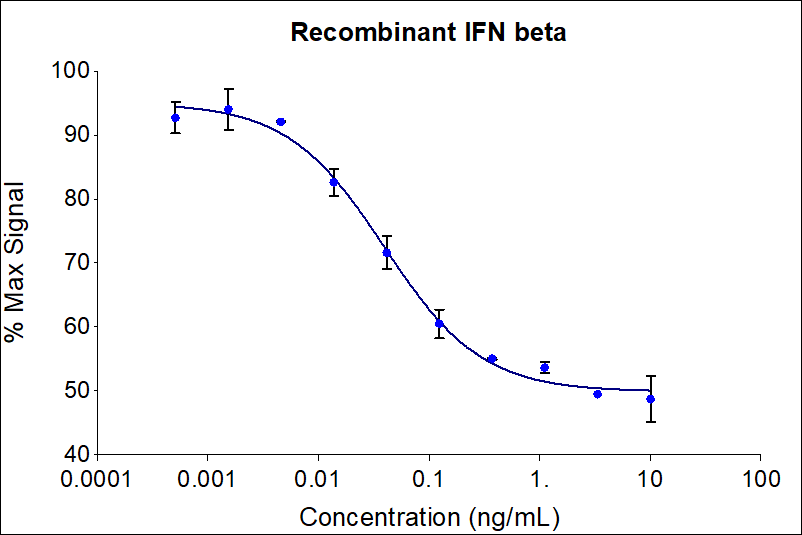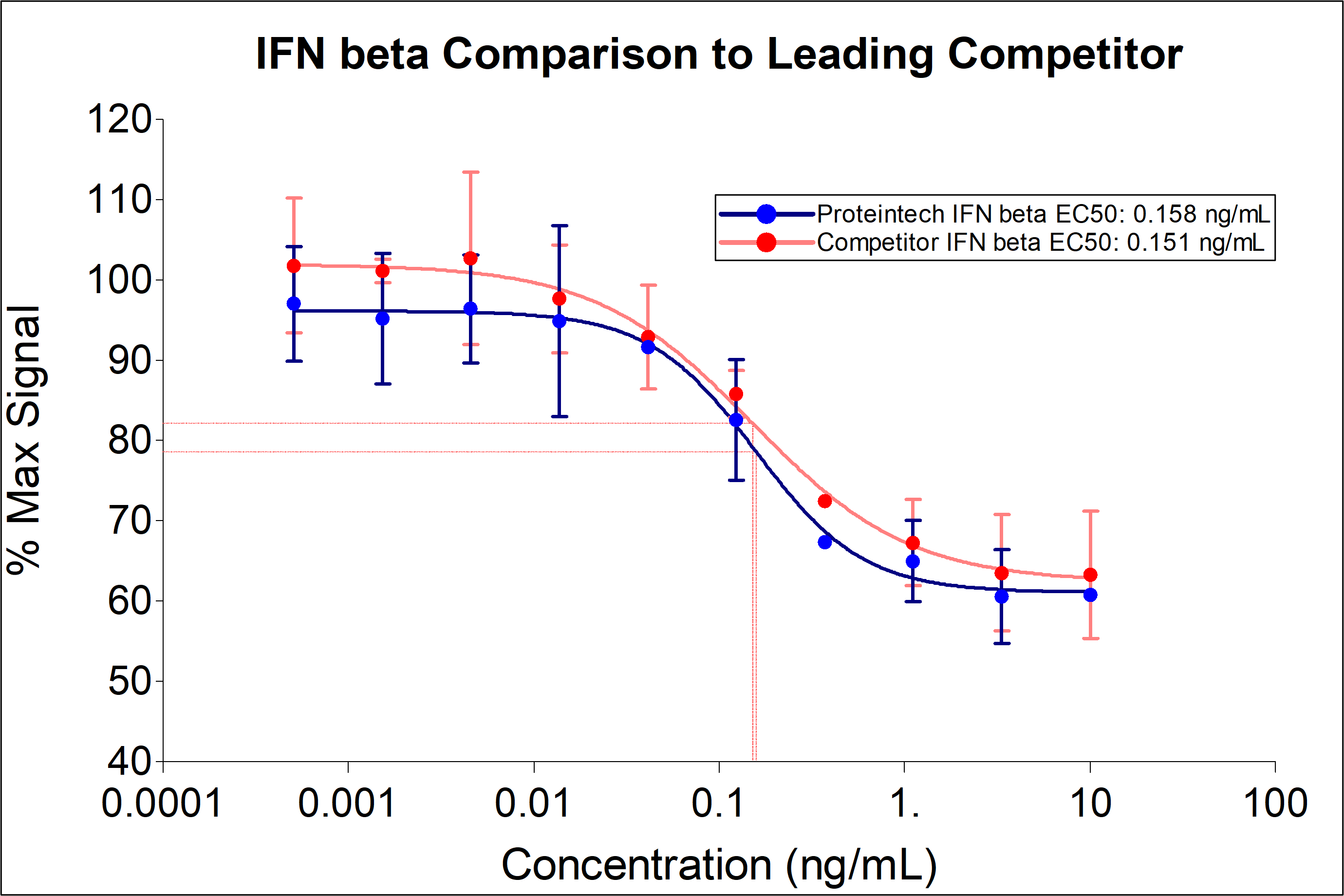Validation Data Gallery
Technical Specifications
| GeneID | 3456 |
| Species | Human |
| Expression | HEK293 |
| Activity(Primary) | 0.015-0.08 ng/mL |
| Specific Activity | minimally 1.00 x 109 IU/mg |
| Purity | >95% |
| Endotoxin | <1 EU/μg |
| Accession Number | P01574 |
| Molecular Mass | 21 to 24 kDa reduced, 20 to 23 and 38 to 42 non-reduced, glycosylated |
| Formulation | Sodium Acetate pH 4.8 + 150mM NaCl + CHAPS, See Certificate of Analysis for details |
| Species Reactivity | human |
Stability and Reconstitution
| Stability and Storage | Product Form | Temperature Conditions | Storage Time (From Date of Receipt) |
|---|---|---|---|
| Lyophilized | -20°C to -80°C | Until Expiry Date | |
| Lyophilized | Room Temperature | 2 weeks | |
| Reconstituted as per CofA | -20°C to -80°C | 6 months | |
| Reconstituted as per CofA | 4°C | 1 week | |
| Avoid repeated freeze-thaw cycles. | |||
| Reconstitution | Briefly centrifuge the vial before opening. It is recommended to reconstitute the protein to 0.2 mg/mL in sterile water. Gently swirl or tap vial to mix. |
Background
IFN beta is a member of type I family of interferons. It binds to the IFNα/β receptor (IFNAR), activating the Jak/ STAT pathway. Activation of this signaling pathway results in upregulating genes that inhibit viral infection and regulate MHC class I antigens. It is primarily produced by fibroblasts and monocytes. In addition to inhibiting viral infection, IFN beta is also involved in regulating and activating immune response against bacteria, parasite and tumor cells. Multiple sclerosis is characterized by a deficiency of IFN beta 1. An injectable form of IFN beta 1 is used for MS treatment (PMID: 22222875; 29258190; 8602746; 8469318).
Synonyms
Fibroblast interferon, IFB, IFF, IFN beta, IFNB, IFNB1, Interferon beta, interferon, beta 1, fibroblast
Publications
| Species | Title |
|---|---|
Oncogene Reciprocal regulation between ferroptosis and STING-type I interferon pathway suppresses head and neck squamous cell carcinoma growth through dendritic cell maturation | |
J Innate Immun Positive Feedback Loop of Long Noncoding RNA OASL-IT1 and Innate Immune Response Restricts the Replication of Zika Virus in Epithelial A549 Cells. | |
Microbes Infect MicroRNA-155 triggers a cellular antiviral immune response against Chandipura virus in human microglial cells |
Reviews
The reviews below have been submitted by verified Proteintech customers who received an incentive for providing their feedback.
FH Janina (Verified Customer) (03-28-2022) | I asked the students who worked with it and they think it works fine. No bad surprises but also nothing special happen.
|
FH Christine (Verified Customer) (12-14-2021) | I induced the expression of interferon responsive genes by treating HEK293T cells for 24 or 48h with various concentrations of IFN beta. Samples were then analysed by western blot for the detection of an IFN induced protein, which was absent at t=0, clearly induced at 24h and even better expressed at 48h. The lowest amount of IFN analysed here was 3 ng/ml. I also tried IFN alpha 2a (cat number HZ-1066) at the same time and the results were also very good, identical.
|



